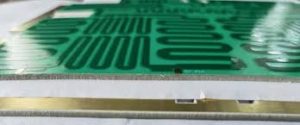Can alumina PCBs be used in underwater applications?
alumina PCBs
Alumina PCBs are a type of printed circuit board (PCB) that uses aluminum oxide (Al2O3) ceramic as the substrate material rather than the more common FR-4 laminate. This choice allows alumina PCBs to deliver high performance, excellent durability and survivability in harsh environments with elevated temperatures.
This combination of thermal, electrical and mechanical properties makes alumina pcb a popular choice for specialized applications. They can be used in a wide range of applications, including LED lighting and testing, proximity sensors and power electronics.
The unique characteristics of alumina make it ideal for use in demanding applications such as high-performance LED lighting and LED power supplies, and RF communication devices. These boards provide superior performance with fewer components than traditional PCBs, and are resistant to chemical hazards, extreme temperatures and moisture. They are also extremely durable and have superior dimensional stability compared to other PCB materials such as glass or polymer.

Can alumina PCBs be used in underwater applications?
Alumina pcbs exhibit high thermal conductivity, and its uniform crystalline structure ensures even heat distribution throughout the entire board. This helps to dissipate thermal loads across the surface of the board, minimizing thermal stress and delamination. The board’s high dielectric strength enables it to sustain elevated voltage differentials between adjacent traces, helping to prevent electric arcing that can lead to a short.
In a bare alumina PCB, copper layers are applied directly onto alumina by means of a metal-to-metal brazing process that eliminates the need for an intermediary adhesive or glue. This creates a strong bond that can withstand peak temperatures of up to 1000degC, and it also allows for thicker core thicknesses. Alumina PCBs are available in single-layer, double-layer and multilayer configurations to suit different applications.
Due to its high thermal conductivity and dielectric strength, alumina is the preferred choice for applications that need to operate at high-temperatures. In addition, alumina has a very low coefficient of expansion, which provides excellent thermal shock resistance. In addition, alumina has incredibly high resistance to chemicals and is very hard, with a Mohs scale hardness of 9, making it a great material for a variety of applications.
Alumina is a great material for making PCBs, as it can be fabricated using standard manufacturing methods and has very good machinability. However, there are some challenges that come with the use of this material. These include high costs, limited supplier availability, specialized fabrication expertise, and long production lead times. In some cases, alumina is not the best option for your needs if you need a PCB with more flexibility, as it has a limited range of operating temperatures. In these cases, you may want to consider an alternative material such as aluminum nitride. Aluminum nitride has similar temperature capabilities, but is more flexible and cheaper. It is also available in a wide range of sizes and layers, making it easier to customize the board for your application.